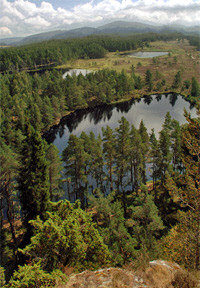Reindeer husbandry and forestry interaction case study
Sweden (Northern ToSIA)
På svenska: Den svenska fallstudien inom Norra ToSIA projektet
Sámegillii: Akšuvdnaiskan Ruoŧas
The Swedish case study is located in the Municipality of Malå,where the Malå Sami village has most of its activities. The aim of the case study is to evaluate effects of changes in forestry measures on the utilization of the forests and the grazing land for the reindeers in the area.
Three different scenarios that affect forest management in the area are planned:
1. Nature conservation (key habitats and protective areas)
2. Reindeer husbandry
3. The synergies between reindeer husbandry and forest conservation.
In 2006 there were approximately 11 reindeer husbandry companies in the Malå Sami village. The Municipality of Malå has an area of 1 600 km2, and the number of inhabitants is about 3 500.
Within of the municipality the scenarios within this case study examine potential management changes in the forests and demand from industry. The impact of these changes on the forestry-wood chain, dependent enterprises, and the Sami village have been evaluated. To do this, the structure and proportion of Forest Management Alternatives from establishment of increased areas of Forest Nature Reserve to Intensive Even-aged Forestry within Malå was established and evaluated.
Today forestry thrives together with electric power plants, active outdoor life, mining industry, car testing, tourism, entrepreneurs, etc. Alongside these activities, reindeer husbandry has been present in the area for centuries. To sustainably be able to keep reindeer husbandry in the area, large areas of grazing land is needed. A continual increase of other land use activities, competing with Sami economy, might put the survival of the Sami village at risk. As the utilization of the area for other purposes increases one has to ask how much encroachment a Sami village can stand to be able to survive.
To secure the aims of the case study the participation of the involved associate partners National Association of Swedish Sami, SCA, Sveaskog, Norra skogsägarna, was a prerequisite. This case study was carried out by Department of Forest Ecology and Management / Swedish University of Agricultural Sciences (SLU).
Progression of the case study
The last workshop of the case study with its stakeholders took place 18-19 January 2011 at SLU, Umeå.
“Stakeholder meeting within the Malå case study within the Northern ToSIA project”
All external stakeholders and interested persons are heartily welcome! A letter of invitation and preliminary agenda by case study leader Erik Valinger () can be found here.
Presentations can be obtained upon request to the case study leader Erik Valinger () or to Diana Vötter ().
Report from the meeting
Final results of the Swedish case study
The Swedish case study extended the ToSIA applications to include non-forest-wood-chains. The study included both the indigenous Sami people’s reindeer husbandry chains and regional forest-wood-chains, which are not linked in their operations but take place on the same forest resource and thus influence each other. Hereby the case investigated challenges and effects of land use between forest industry and reindeer herding: Indicator data for forestry and for reindeer husbandry chains were collected, checked and discussed in meetings with Sami representatives and other stakeholders. Theinterest for continued communication between Sami and forest industry also after the project end was initiated.


